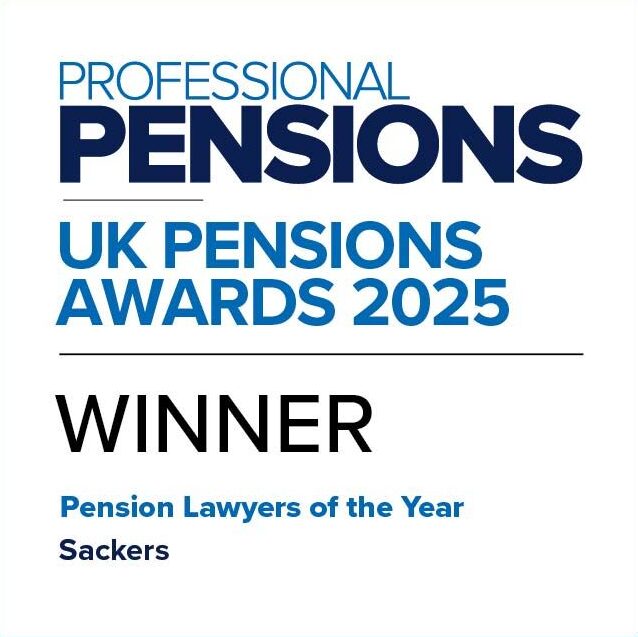Background
HMRC has published draft legislation to bring most death benefits and unused pension pots within the scope of inheritance tax (“IHT”), and has asked for comments by 15 September 2025.
In this response
General comments
We appreciate that HMRC has listened to concerns raised by the industry about its initial proposals.
Our understanding from the July policy paper is that the policy objectives are to remove:
- distortions which have led to pension schemes being increasingly used and marketed as tax planning vehicles to transfer wealth, rather than for funding retirement, and
- inconsistencies in the IHT treatment of different types of pension.
We are also conscious of how these proposals fit in with the Government’s wider pensions policy, including:
- More investment in the UK
Following on from its Pensions Investment Review, the Government wants “more investment in productive assets and greater potential returns for members of DC workplace schemes”. We can see this in initiatives such as the Mansion House Accord. The new Pension Schemes Bill contains a reserve power that will enable the Government to set baseline targets for pension schemes to invest in a broader range of private assets, including in the UK, if the industry doesn’t make sufficient changes on its own. This drive could lead to private pension schemes holding significantly more illiquid assets.
- Improved retirement outcomes for all
The re-launch of the Pensions Commission, which will be exploring, among other things, the long-term questions of adequacy and retirement outcomes.
We are concerned that certain aspects of the revised proposals may not be in keeping with the policy objectives or the Government’s wider pensions policy noted above. In particular:
- Difference between DB dependant pensions and unused DC pots
There is an ongoing shift in the private sector from DB to DC benefits, particularly since the introduction of automatic enrolment. DB schemes typically have a spouse’s pension payable on death, which is often also payable to a dependant where there is no spouse (eg an unmarried partner), as well as children’s pensions. These pensions are payable as “scheme pensions” and would be outside of the scope of these reforms. However, any unused DC pots will be caught. Whilst the pot will be exempt if it is left to a surviving spouse or civil partner, there are situations (eg payment to an unmarried couple, or children) where this exemption will not apply. These unused pots often haven’t been used for wealth planning, and they provide an alternative to a spouse’s pension and, particularly on early death, to children’s pensions.
As DC pension pots increase in size with the shift from DB to DC and auto-enrolment, there is increasing potential for them to form a larger part of household wealth and bring more people within scope of IHT. The difference in treatment between DB dependant pensions and DC pension pots, and between spouses/civil partners and unmarried partners leaves increasing potential for unfair differences in treatment based on whether or not a couple is married, particularly on unexpected death at an earlier age.
To give an example: A couple with two school aged children where one partner (partner 1) has worked and built up pension savings for retirement while the other partner (partner 2) has been a lower earner working part time to care for the children and has minimal pension savings. They have no other material savings. Partner 1 dies unexpectedly at age 50:
- If partner 1 has a DB pension with an attaching spouse/dependant’s pension, plus children’s pensions, these will be paid out to partner 1’s family with no IHT consequences.
- If partner 1 has a DC pot of £500k and is married to/in a civil partnership with partner 2, if this is paid out to partner 2 then there will be no IHT consequences (as it will fall under the spouse’s exemption).
- If partner 1 has a DC pot of £500k and is not married to/in a civil partnership with partner 2, IHT will be payable on the excess over the tax-free threshold and there will be a reduced amount available to support partner 2 and the children.
This seems to exacerbate inconsistencies in the treatment of different types of pension, and differences in treatment between married/civil partnerships and unmarried couples. It would be important to take steps to ensure public awareness of these differences and the importance of marriage/civil partnership to managing IHT consequences if implementing the current proposals as planned.
- Guarantee periods
We note that guarantee periods will be within scope of IHT, for example, five-year guarantees. A five-year guarantee is a common feature in a DB scheme that ensures the pension is paid for at least five years. If the individual dies within the five-year period, typically a lump sum death benefit equal to the value of the remaining pension instalments for those five years is payable (which falls within the definition of a “pension protection lump sum death benefit”).
There are variations on this, particularly in a DC context, where you can have guarantees up to ten years, and a lump sum might be payable as a “pension protection lump sum death benefit”, or alternatively the pension may remain payable for the guarantee period (and would be a “relevant death benefit” for IHT purposes by virtue of clause 150A(5)(c) of the draft legislation).
In the DC environment, choosing to include a guarantee when someone purchases their annuity has a cost (ie, a pension pot will provide a lower annual income from an annuity if a five-year guarantee is included than would be the case if the same pension pot were used to purchase an annuity without a five-year guarantee). For this reason, guarantee periods do not appear to constitute tax planning to transfer wealth (so do not fall within the scope of the Government’s policy objectives). Rather, they are used to ensure individuals receive some value from their pension in case they die very soon after they begin to receive their benefits. We are not sure how bringing these guarantees within scope of IHT achieves HMRC’s policy intent, given they arise once someone has started their pension benefits and, particularly in a DC context, where purchasing a guarantee as part of the annuity has cost consequences.
Comments on the draft legislation
1. Scope of new section 150A(1)
It is very common for private sector DB pension schemes to give trustees and employers a power to increase or pay new benefits in respect of a member or their beneficiaries on death above the standard benefits under the scheme, with the power being expressed in wide terms. Such powers would typically be wide enough to allow a trustee to augment any member’s death benefits. In practice, trustees would only use these powers in limited circumstances and after following a proper process to consider their trustee duties. The powers are also often subject to sponsoring employer agreement. If read literally, however, draft section 150A(1)(b) could be interpreted as including this discretion and therefore bringing the entire scheme assets into scope of s150A(1) on the death of an individual member, which we assume is not the intention. It would therefore be helpful to clarify that such augmentation powers are not included here.
2. Definition of death-in-service benefit (new section 150A(6) of the Inheritance Tax Act 1984)[1]
Our understanding is that the policy intent is for death benefits that are payable only when the member is working to fall outside the scope of IHT. Death-in-service benefits are generally based on a multiple of the employee’s salary at the time of death, but they can be in various other forms too. They can also be defined by reference to, for example:
- a fixed sum of money
- the value of the member’s pot, or
- the greater of the value of the member’s pot and a multiple of salary.
The proposed definition of death-in-service benefit in section 150A(6) includes that the lump sum benefit is not payable unless the member is:
- an “active member of the scheme”, and
- in “employment of a description specified in the terms of the scheme”,
and that the benefit itself is “not payable unless the member is an active member”.
“Active member” as a concept
The concept of an “active member” is hugely complex. Although there is a definition in the Finance Act 2004 (“FA04”), different definitions are used in other contexts, such as in DWP legislation. There have been court cases on what it means to be an active member, including related concepts such as accruing benefits or being in pensionable service.[2] Given these difficulties, we suggest moving away from the concept of active member altogether, and, instead, use the second limb above, which we think addresses the policy intent, ie the person needs to be in “employment of a description specified in the terms of the scheme”, subject to minor changes (see below).
Being in “employment”
As drafted, the requirement to be in “employment” would exclude individuals who have insurance-type benefits under a registered scheme but who are not in employment, for example members of a partnership or sole traders. Given this goes against the wider policy of encouraging more people to save for retirement, we suggest expanding this to “employment or other service of a description specified in the terms of the scheme”.
Active member for tax purposes
If HMRC decides to retain the concept of an “active member” for IHT purposes, then we feel that further clarification is needed. An “active member” for IHT purposes is defined by reference to the tax rules definition of “active member”, set out in section 151(2) of the FA04, which states:
“For the purposes of this Part a person is an active member of a pension scheme if there are presently arrangements made under the pension scheme for the accrual of benefits to or in respect of the person.”
Whilst this definition works for open schemes, which provide pension and death benefits, such as public sector schemes, some benefit structures in the private sector are more complex. For example:
- “life cover only” schemes only provide death-in-service benefits, which are separate from an employer’s main pension scheme
- a DB scheme, which is closed to future accrual of pension benefits, but is still used to provide death-in-service benefits to employees who are deferred members.
In each of the above examples, there is no accrual of pension benefits. HMRC’s Pensions Tax Manual (“PTM”) (PTM053910) helpfully states that any continuing life cover could constitute an “accrual” of benefit and so make the member an active member for the purpose of the tax rules, eg where the continuing life cover is a defined benefit which is based on the employee’s salary at the time of death. However, this is specifically in the context of the annual allowance, relates to members with accrued pension benefits in the same scheme, and could be read as limited to the scenario where the life cover is based on the employee’s salary at the time of death (but sometimes these benefits can be fixed amounts, rather than based on salary at death).
Given the uncertainty, it would be useful to have clarification of the intended scope of the “death-in-service” concept, and what counts as “accrual” for these purposes.
Benefit “not payable unless the member is an active member”
Section 150A(6)(b) states that a “death-in-service benefit” is (among other things) a lump sum that is not payable unless the member is an active member. As mentioned above, our understanding is that this is intended to capture benefits which are only payable to employees, eg the multiple of salary lump sum.
However, as drafted, this provision could be interpreted to cover additional benefits in the case of DC schemes. For example, if one rule applies on the death of active members (in which a multiple of salary plus the value of their DC pot is payable on their death) and a separate rule applies on the death of deferred members (under which the value of their DC pot is payable on their death), it could be argued that the benefit under the first rule is not payable unless the member is an active member, so the full benefit under that rule would fall out of scope (ie the multiple of salary and the DC pot). However, you could also argue that, as the value of the DC pot is also payable to deferred members under the second rule, that the condition isn’t satisfied, in which case that element of the death benefit (ie the value of the DC pot) should be within scope of IHT.
We suspect the second interpretation in our example reflects HMRC’s intention, but we suggest that the drafting is amended to clarify the point.
3. Death-in-service benefit to be a “lump sum death benefit” (new section 150A(6))
The proposed definition of “death-in-service benefit” requires the benefit to be a “lump sum death benefit”. However, scheme rules are often drafted to give flexibility to trustees (whether to pay a dependant’s pension as a lump sum or vice versa), even if the flexibility isn’t used in practice. For example a dependant may be able to opt for a lump sum in place of pension, or to opt that a large lump sum (for example, eight times salary) could be applied in part to provide a pension, and part as a lump sum. It would be helpful to clarify whether the existence of a discretion to pay a pension would mean that the payment would (or would not) count as a death-in-service benefit.
4. Direct payment of IHT by the pension scheme administrator (“PSA”)
Members and schemes are familiar with a concept of “scheme pays”. Under scheme pays, where a member is subject to an annual allowance charge then, when certain conditions are met, they can ask (or require, when the charge is over a certain amount) a scheme to pay the charge and deduct it from their benefits (see sections 237A to 237E of the FA04 and associated regulations). We suggest that, where appropriate, that the same approach is followed for IHT payments, to help streamline processes and keep things as simple as possible.
Decrease in value of benefits (new section 226A(3))
We understand that the value of the death benefit for IHT purposes is the value of those benefits as at the date of the member’s death. The value of a member’s DC pension pot will fluctuate with market conditions, so it is possible that the pot’s value at the time it is paid out to a beneficiary is significantly less than its value for IHT purposes. While many schemes may move the pot into cash or cash-like assets following notification of death, this may be some time after the actual date of death and may not always be the case. We suggest that new section 226A(3)(a) is amended to make clear that the IHT payable by a PSA does not exceed the value of the benefit held by the scheme at the time the IHT is paid.
We are not IHT experts, but we understand there are reliefs available in other contexts eg “loss on sale relief” for shares sold at less than the value used for IHT purposes. The rationale for a relief would appear to also apply to DC pension pots given the potential for the value paid out to be less than the value used for IHT purposes – will a similar relief be provided?
PSA to pay IHT within three weeks (new section 226A(5))
The PSA will be required to pay any IHT within three weeks of receiving a notice from the beneficiary under section 226(3). From our understanding of administrator processes, this is far too tight a timescale for them to meet. Instead, we would suggest that this is tied into the existing Accounting for Tax quarterly reporting process.
There is also the risk of cash flow issues for schemes that are heavily invested in illiquid assets (in keeping with wider pension policy, discussed above) or for smaller schemes and SIPPs, where access to cash may be limited. The PSA won’t have access to the various options available for personal representatives, such as the direct payment scheme. We suggest further thought is given to this and that the timescale for making payment is extended.
Authority to deduct and pay IHT (and any interest) (new section 226A(9))
Whilst new section 226A(9) provides that any terms of a registered pension scheme are void to the extent that they purport to prevent a payment of IHT as requested under the new s226A provision, we suggest including a power to modify scheme rules to authorise PSAs to deduct and pay the IHT (and any interest due) and to adjust the beneficiary’s benefit accordingly.
This approach was taken in relation to “scheme pays” – see section 237F of the FA04 and the Registered Pension Schemes (Modification of Scheme Rules) Regulations 2011/1791, which modify scheme rules where the scheme pays the annual allowance charge due in respect of a member.
Power to apply for discharge of liability to pay IHT (new section 226A)
Section 237D of the FA04 enables a PSA to apply to HMRC for the discharge of the administrator’s liability to pay the annual allowance charge when specified grounds are met. It would be helpful to have a similar provision in the proposed IHT provisions.
Payment of lump sum death benefit in instalments
We understand there have been discussions about PSAs paying some death benefits in instalments, pending calculation of any IHT liability. It would be helpful to have an overriding power (or an overriding modification power) to enable PSAs to pay death benefits in instalments, as there will be some scheme rules that do not currently permit this.
5. Joint life annuities (new s150A(5))
Our understanding is that the policy intent is to exclude a survivor’s benefit from a joint life annuity taken out by the member from the member’s IHT estate.
This should be the case where the joint life annuity was taken out in the name of the member and the survivor, as we understand the survivor’s portion is a deferred annuity when taken out, and it will be treated as a separate registered pension scheme under section 153(8) of the FA04. The survivor (and not the deceased individual) is the member of the scheme and so the survivor’s annuity will not fall within s150A as drafted.
However, where a joint life annuity was taken out by the trustees (which was permitted by HMRC), this will be an asset of the deceased member’s pension scheme and as such will fall within the remit of section 150A (Certain pension property treated as part of estate). A joint life annuity will be treated as either a “dependant’s annuity” or “nominee’s annuity”, both of which are “pension death benefits” (as defined in section 167(2) of the FA04), for the purposes of section 150A(7). As a result, as drafted, our view is that joint life annuities held by the scheme will fall within the scope of IHT. We expect this was not HMRC’s intention, so we suggest this is considered further and clarified, if needed.
6. Trivial commutation lump sum death benefits (“TCLSDB”) (new s150A(5))
We understand that the policy intent is to exclude any part of a TCLSDB which represents a dependant’s scheme pension from the member’s estate for the purposes of IHT.
However, a TCLSDB will be a “lump sum death benefit” for the purposes of section 150A(7) and, therefore, count as a “relevant death benefit” and fall within scope of IHT. This analysis applies whether the TCLSDB derives entirely from a dependant’s scheme pension or whether some or all of the TCLSDB derives from a guarantee attaching to the member’s pension.
Given this goes against the policy intent, we suggest a specific exclusion for a TCLSDB derived from a dependant’s scheme pension be included.
[1] All statutory references are to the Inheritance Tax Act 1984, unless otherwise stated
[2] For example, Merchant Navy Ratings Pension Trustees Ltd v Stena Line Ltd and others [2015] EWHC 448 (Ch)







